NARRATIVE, TWIN-STICK SHOOTER
MY ROLES: GAME DESIGNER, 2D ARTIST, NARRATIVE DESIGNER
Team Members: Aunonna K., Julianna D., Ali S., Ricki D., Marwan M., Owen P.
It Never Ends is a narrative game with twin-stick shooter mechanics, that tells the story of a young woman dealing with depression. This game was developed by a team of 5 over the course of around seven months, at the same time as our other college classes were in session. The goal for this game was to learn how to tell a resonant story and work as a team to make a mostly-finished product over a long period of time. My main roles in this project were Game Designer and 2D Artist. I also helped with level design, narrative writing/editing, animation, and asset integration where needed.
FINAL PRODUCT
The goal of the game is to explore and try to piece together what is going on through item interactions. After this, the player can interact with the boss monster, Depression, and choose how to fight against it. The player has the option to either use the Toy Gun, which is completely ineffective, or the Clarity Gun, which is very effective. Our use of these two guns was an attempt to translate coping mechanisms for depression into game items.
For this project, I worked as a game designer and 2D artist. My tasks while working on this game consisted of coming up with ideas for the game, and making sprites and animations for the game scene. Below are the main parts I worked on for this project. Above is a brief playthrough of our game, showing the 'good ending'.
MY WORK
CHARACTER ANIMATIONS


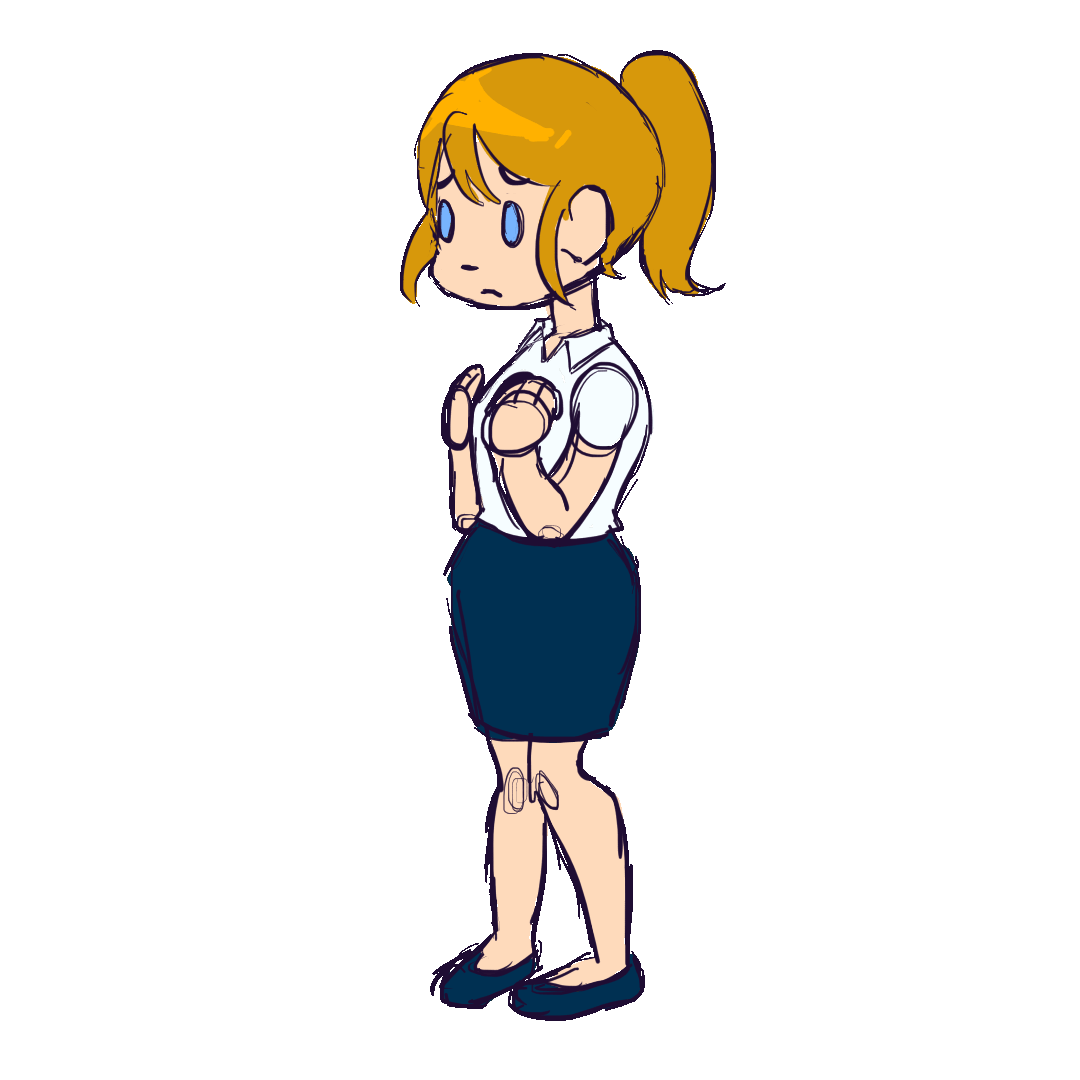
PLAYER IDLE


PLAYER WALK

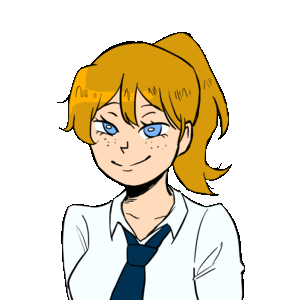
PLAYER TALK SPRITES
i made all the art assets for this project, from the environment sprites, to the tilesets, to the character animations. The art assets were strongly tied to the narrative of this game, so before and during the creation of them, I had to constantly check in with our Narrative Lead and our story plans. After clarifying things in meetings and making concept sketches, I settled on these designs.
It took a long time to get here, however, and the protagonist in particular took the longest. She had about 3 notable versions (shown here, labeled V1 and V2, with V3 being the final), all made for different purposes. The first version was very rough and quickly put together, so we could have something to put into Unity, our game engine. The second was when I wanted to make better animations and character designs. The third is still rough, but more polished overall, with a more fitting idle animation that shows the character's anxiousness.
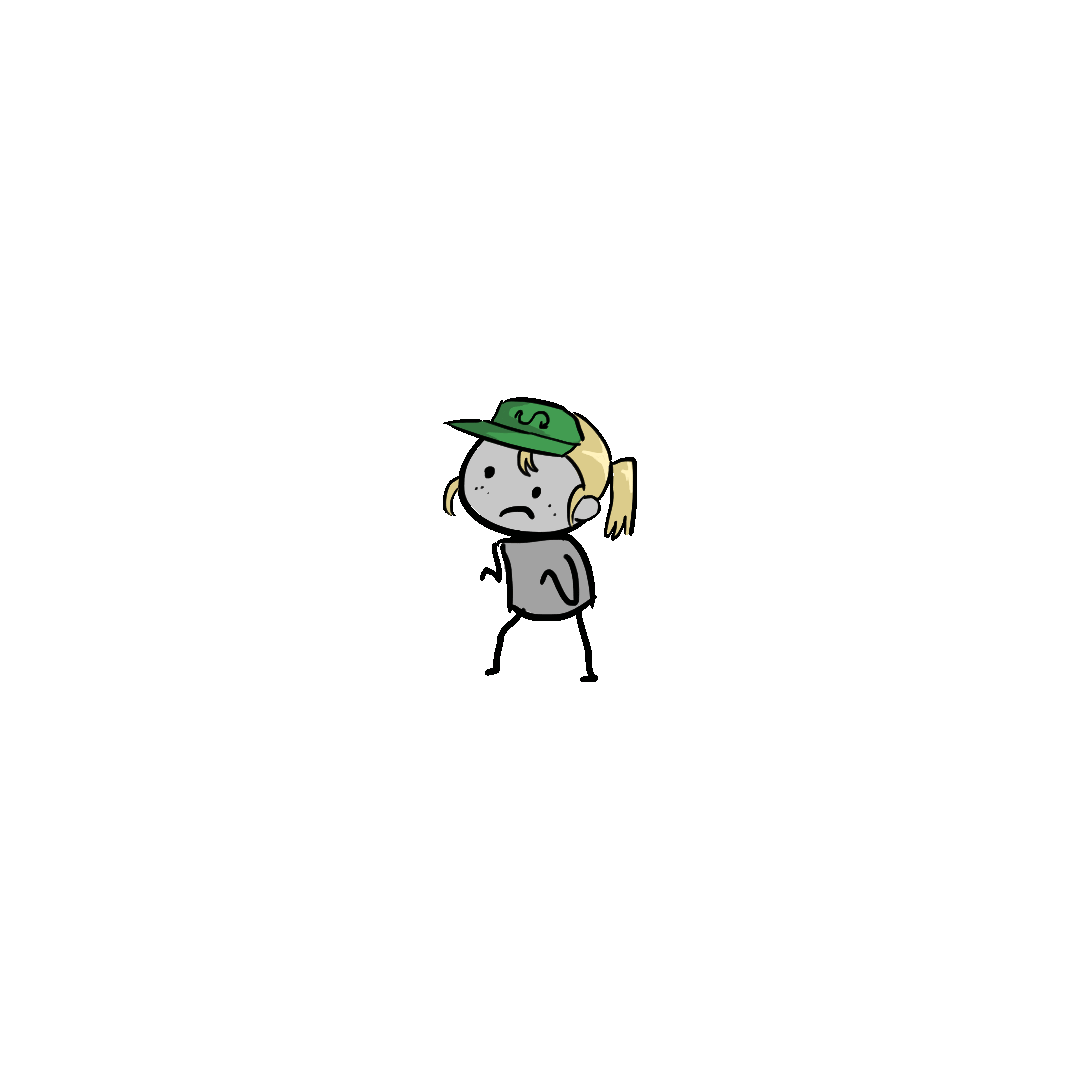
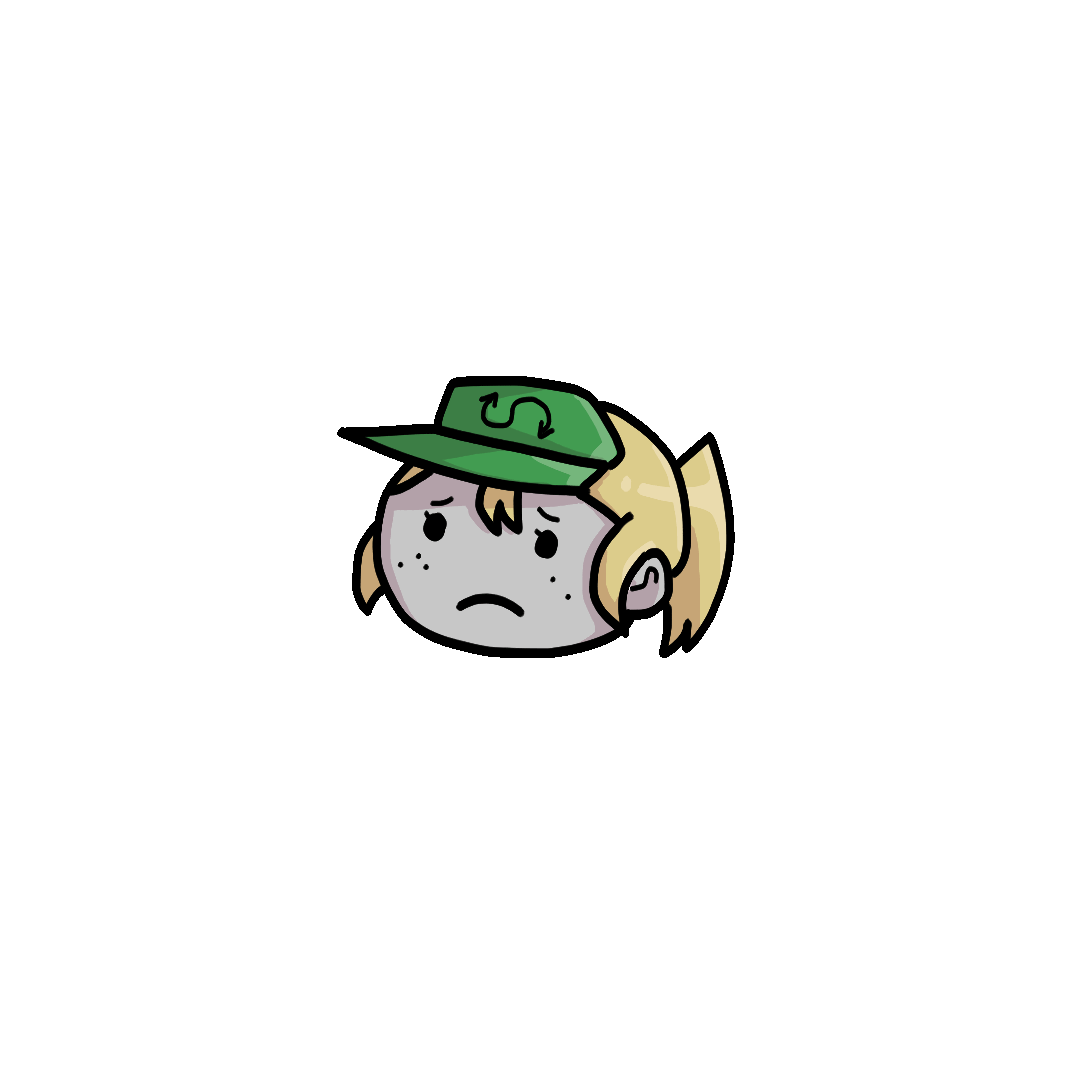


V1
V2
I enjoyed making the boss's animations, as it made me have to think about his characterization, and how that would affect his movement. Since I was working on the narrative with a teammate, I tried to use that information and translate it into actions that the boss, called Depression, would perform.
I created some multipurposed talk sprites for dialogue, and for animations, the modes I made were: idle, wind-up, attack, and hit.

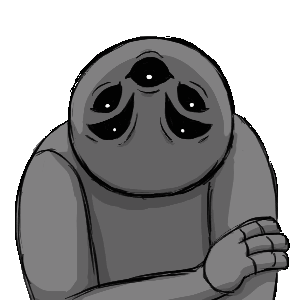
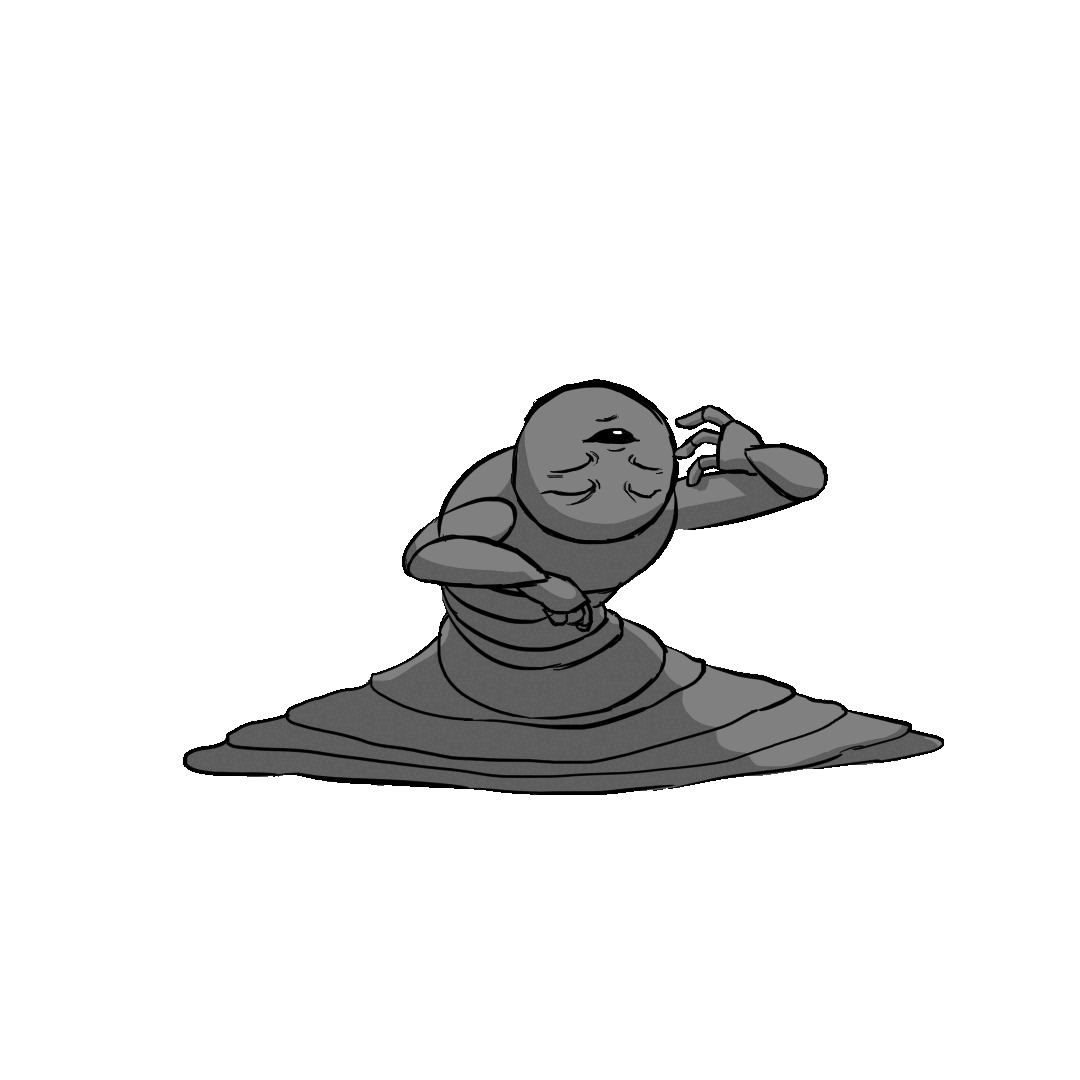
TALK SPRITES
ALL ANIMATIONS
ENVIRONMENT ART
.jpg)
Above are most of the art assets I made for our level. There are some which are simply minor variations of themselves, because I wanted the assets to be as modular as possible. Hence the small leaves, leaf piles, and slightly different cubicle designs. These ended up working well for our game space, as the lead level designer was able to use those small parts to fit the narrative beats they wanted to create for the player.
Most of the assets here are based on office props, like coffee cups, desks, papers, etc. But a lot of other ones are more bizarre, such as the glowing trees and papers with eyes on them. This is because our game is meant to be a nightmare within the mind of the main character. This is also why the world starts off looking like a normal office, and descends further into purple hues and strange sights like glowing trees the further you go in. More assets can be seen in the background of the Final Product video at the top of this page.
GAME DESIGN

Created by me using Miro. (Click to see full image.)

Created by me using Miro. (Click to see full image.)

This was me figuring out how to improve one of the assets based on research. (Click to see full image.)

Created by me using Miro. (Click to see full image.)
Although it was a team effort, I put a lot of work into designing the level's layout, making an overly detailed design at first, so that we could break it down into the most necessary, core parts afterwards. What I've noticed from working on this project and others is that approaching level design in this way sometimes makes it easier to come up with better designs. Making something overly detailed and then cutting it down to the best or base parts often leads to clearer design decisions. In this case, I made an office layout, with an idea for a boss spawn room, and then discussed our game's narrative needs with the team; this led to our Level Design lead Jay coming up with a better, more condensed room plan later on.
The other images in the gallery above show various parts of game design I worked on for It Never Ends with my team.
TAKEAWAYS
This is probably the longest time I've spent working on a game project with a team since I started college. We went through many game concepts in small sprints, and we lost and then gained team members along the way. It was sometimes tough, since not all members were present, and because we were all pretty new to each other, we were all overly polite or cautious with what we had to say. By working with this team, and facing the struggles of losing and gaining new members, I learned a lot about the importance of communication and team bonding. Working on the same project for so long could sometimes get tiring, and it was important for us to take breaks and set boundaries for outside of class, so we weren't constantly crunching to get work done.
Lessons like patience and needing to communicating often/in different ways were also things I learned when getting to know my teammates during development. Work always went better when we spoke in great detail about our individual ideas, explored them, shared, made decisions and then wrote them down somewhere. This process order helped us come to decisions faster and generate more developed and interesting ideas. It was also super important for discussing flaws in our work-- for this project, it was the narrative in particular that was a hot topic of discussion. I still think there's room for improvement, but as this was a group effort and not everyone could look over everything, some compromises had to be made. In the future, I'm sure I'll meet even more people with unique quirks and traits, and I'll try to apply what I learned from this long project for when that time comes.
Lastly, I noticed that this project really let me develop my asset creation skills. While not my best work, developing this game helped me find ways to make assets faster, nicer, and more convenient for in-engine use. Most of it was discovered through trial and error, like when I noticed all the tables in an early build had huge colliders instead of ones the size of the table. I fixed this when re-doing the cubicle tables, trimming the sprites down to their size, so there was no extra negative space there. I also learned about why certain assets in RPGs are drawn the way they are, like the perspective of tables being in a top-down view, despite the player character being in a front/side view. Other little things also came to my attention while working on this, like how a proper naming system for assets really helps out other team members, as does having a well-organized and labeled folder system in the game engine. I know for sure that this will help me be a better game designer, developer, and artist in the near future.

